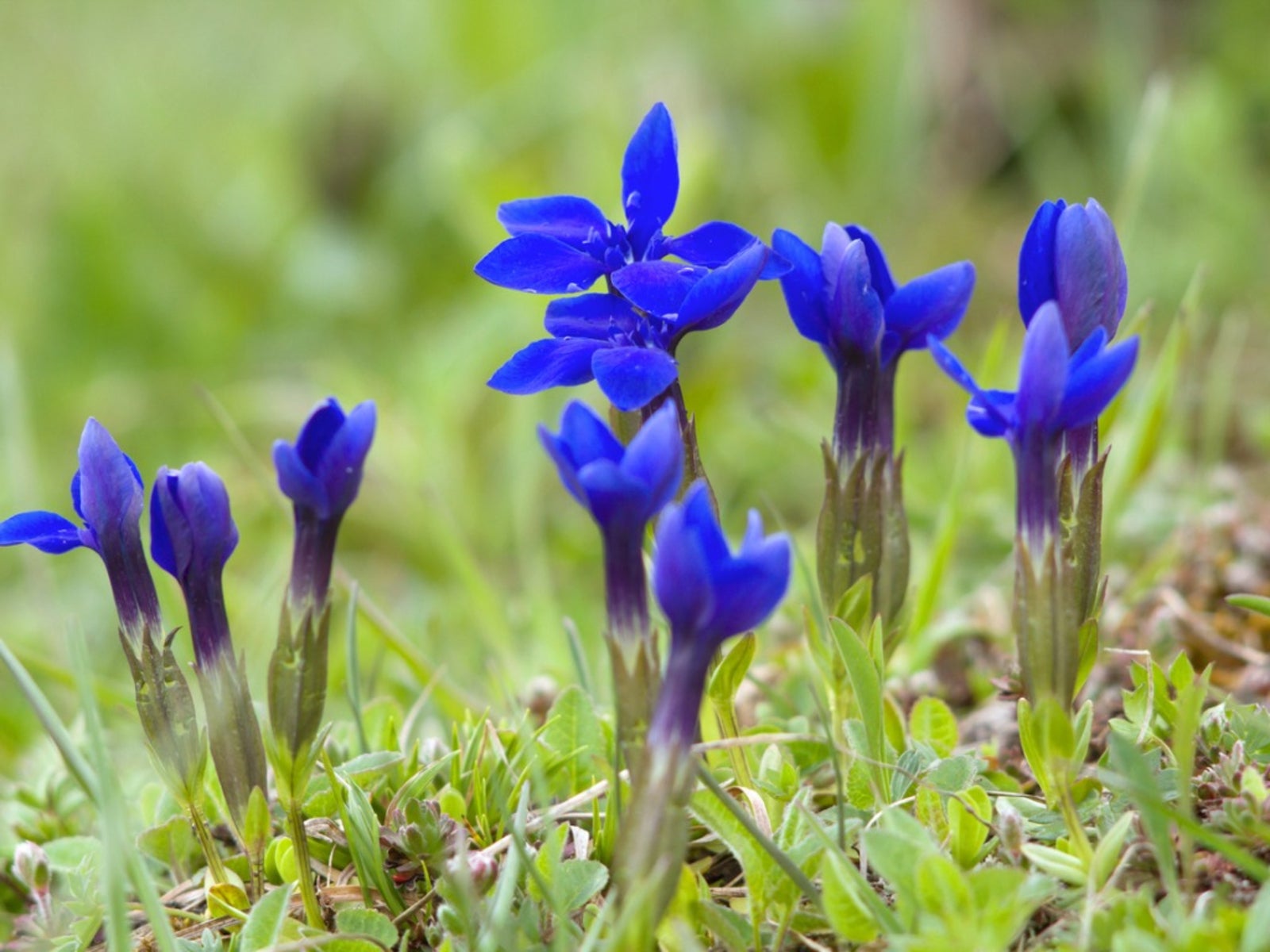How To Grow And Care For A Gentian Plant
Gentian wildflowers are a lovely addition to any garden! With their gorgeous, bright blue flowers and low-maintenance care requirements, they are a popular choice for beginner and experienced gardeners alike.

Plant Attributes
Gentian plants, also known as Gentiana, are native to the northern hemisphere and can thrive in a variety of environments, including mountain meadows, forests, and wetlands. They tend to grow between 6 and 20 inches tall and have rich, green foliage accented by vibrant blue or purple flowers.
These plants are known for their ability to attract butterflies, bees, and other pollinators, making them an excellent choice for anyone who wants to encourage biodiversity in their garden. In addition, they are relatively disease-resistant, which means that they require little to no pesticide use.
Plant Care
Gentian plants require well-drained soil that is rich in organic matter. They prefer slightly moist soil and benefit from regular watering, especially during the growing season. If you live in an area with hot summers, consider planting your gentians in a partially shaded area to prevent the flowers from wilting.
In general, gentian wildflowers are low-maintenance plants that require very little care to thrive. However, if you notice that the leaves are beginning to yellow or the flowers are not blooming as frequently as you would like, you may need to provide some additional fertilizer or adjust your watering schedule.
Pruning
Unlike many other types of flowers, gentians do not require regular pruning to maintain their shape or size. However, if you notice that a particular branch or stem is growing out of control or interfering with other plants in your garden, you can trim it back using sharp pruning shears.
Propagation
Gentians are relatively easy to propagate using seeds or cuttings. To grow gentian plants from seed, simply scatter the seeds over well-drained soil in the late fall or early winter. Cover the seeds with a layer of soil and water them lightly. Germination typically takes between two and three weeks.
If you prefer to take cuttings, simply snip off a healthy branch from an existing gentian plant and plant it in soil. Keep the soil moist and place the cutting in a partially shaded area until it takes root.
Potting & Repotting
Gentian plants can be grown in containers and make a lovely addition to patios, balconies, and indoor spaces. When potting gentians, it is important to choose a container with adequate drainage holes and use a soil mix that is specifically designed for growing flowers or vegetables.
When repotting a gentian plant, be sure to choose a container that is slightly larger than the previous one. Gently remove the plant from its current pot and add fresh soil to the new pot. Place the plant in the center and add more soil, pressing gently to compact it around the roots.
Common Pests & Plant Disease
Gentians are relatively disease-resistant and do not attract many pests. However, they are susceptible to root rot if they are over-watered or planted in soil that does not drain properly. To prevent root rot, ensure that your gentian plants are planted in well-drained soil and water them only when the top inch of soil is dry to the touch.
Common Problems
If you notice that your gentian plants are not blooming as frequently as you would like or the leaves are turning yellow, you may need to adjust their watering schedule or provide some additional fertilizer. In addition, gentians may suffer from overcrowding or invasive species in the garden, which can lead to stunted growth or poor flowering.
Overall, gentian wildflowers are a lovely addition to any garden or indoor space. With their low-maintenance care requirements and stunning blue flowers, they are sure to brighten up your day!
/flaxGettyImages-577737424-bbf545865533439e933eafd5061188a6.jpg)
:max_bytes(150000):strip_icc()/crownimperialGettyImages-639835260-65b883f796d048c9811badda42d802dc.jpg)


Post a Comment for "How To Grow And Care For A Gentian Plant"